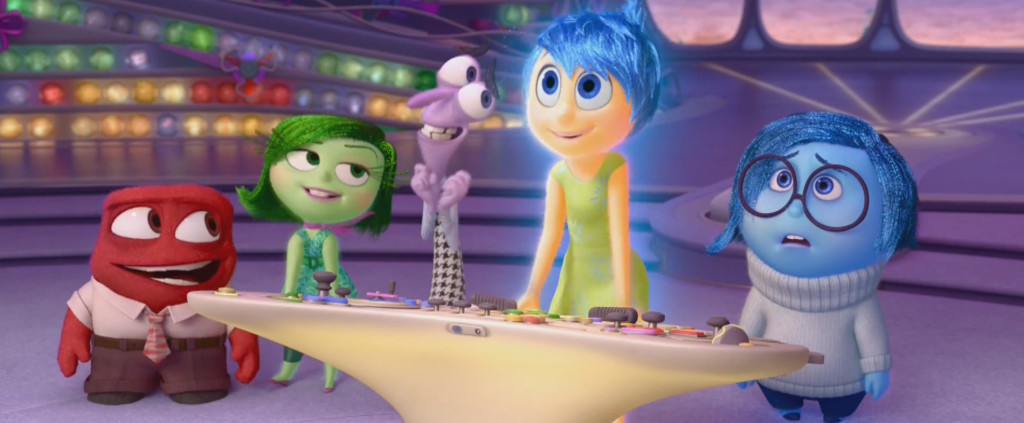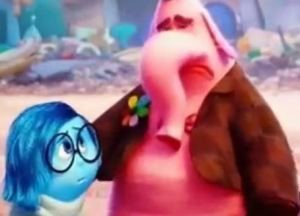Inside Out vs the Kardashians: The Catharsis of Confronting Difficult Emotions

This past weekend, while folding mountains of laundry, I binge-watched Keeping up with the Kardashians – a show I’ve heard about and read about, but never really understood. This hugely entertaining and mildly nauseating soap opera is a celebration of aspirational consumerism. It’s populated by a vivid ensemble of attractive, fame-hungry celebrity millionaires who act out their family and personal drama in expensive, photogenic settings. It’s a “reality” show with scripted, edited story arcs – overseen by an all-powerful matriarch that everyone loves to hate – while basking in the luxurious fruits of her business acumen and rapacious appetite for glamour and spectacle
The Kardashians are loud, crude, endlessly superficial, and deeply human. They express strong, true emotions — emotions we recognize — and the process those emotions out loud, often with the help of a well-paid therapist, energy healer, or doctor. These arcs of emotional pain and resolution are deeply satisfying to watch – and reminiscent of the scripted, tear-jerking endings of ensemble shows like Modern Family, Fresh off the Boat, and – yes – even the Brady Bunch.
The Kardashians like to say “We’re the modern-day Brady Brunch.” However, unlike that sanitized suburban family, the Kardashian Klan are profane, scandalous, and devious – yet also loving, loyal and family-oriented. This all-too-human contradiction is at the heart of what makes this fake-reality show so compelling and watchable- at least for me.
 We also saw Inside-Out last week — which carries a similar message in an entirely different wrapper. In this movie, a young girl is uprooted from everything and everyone she knows when her family moves from Michigan to San Francisco. As she grapples with her new situation, Riley experiences powerful emotions – sadness, grief, fury – that her parents are ill-equipped to handle. “Where’s my happy girl?” they say to her playfully — glossing over her despair and anger until she’s driven to extreme measures. It’s only when Riley is able to experience and accept her sadness that she returns to her worried and bewildered parents, who are there to comfort her as she “comes back to herself” and cries in their arms.
We also saw Inside-Out last week — which carries a similar message in an entirely different wrapper. In this movie, a young girl is uprooted from everything and everyone she knows when her family moves from Michigan to San Francisco. As she grapples with her new situation, Riley experiences powerful emotions – sadness, grief, fury – that her parents are ill-equipped to handle. “Where’s my happy girl?” they say to her playfully — glossing over her despair and anger until she’s driven to extreme measures. It’s only when Riley is able to experience and accept her sadness that she returns to her worried and bewildered parents, who are there to comfort her as she “comes back to herself” and cries in their arms.
It’s cathartic to watch characters experience strong, difficult emotions – and then put those feelings into perspective and move on. Too often, we shy away from difficult emotions — when in fact we’d be much better served by acknowledging them, with empathy and patience — like Sadness sat with Bing Bong. The core message of Inside Out is that you need ALL your emotions to be healthy human being — and fully experiencing sadness (and other dark emotions) is necessary for personal growth and overall sanity. Watching this movie with my daughter was a wake-up call – a reminder to NOT stifle and brush away difficult emotions, but to welcome them, empathize, and know that the storm will pass.
Although I’m horrified by the rapacious consumerism and vapid values of the Kardashians, I now understand the powerful appeal of seeing raw, difficult emotions being played out, dissected and discussed. Whether or not it’s real or fake, the emotional arcs ring true.
Not surprisingly, the topic of handling difficult emotions comes up BIGTIME in my work with startups – I’ll write more about that soon. In the meantime, I’d love to hear your thoughts about Inside Out, the Kardashians, and how you handle strong emotions with your family, friends, and co-workers.
July 14, 2015 @ 4:47 pm
I anticipate keen observations about the role of dark emotions in startups.
The societal benefit of the Kardashians is akin to the societal benefit of Roman Emperors sponsoring spectacles in the various coliseums. The spectators’ response to cathartic moments evoke sympathetic emotional discharge. I argue it promotes my well-being…as long as I know it is a treatment. Although I cannot very well go out and assassinate my opponents without the probability of unfavorable consequences; I can watch the rituals of murder or victory and experience my own catharsis. Happens every night with Skyrim…several times a night.